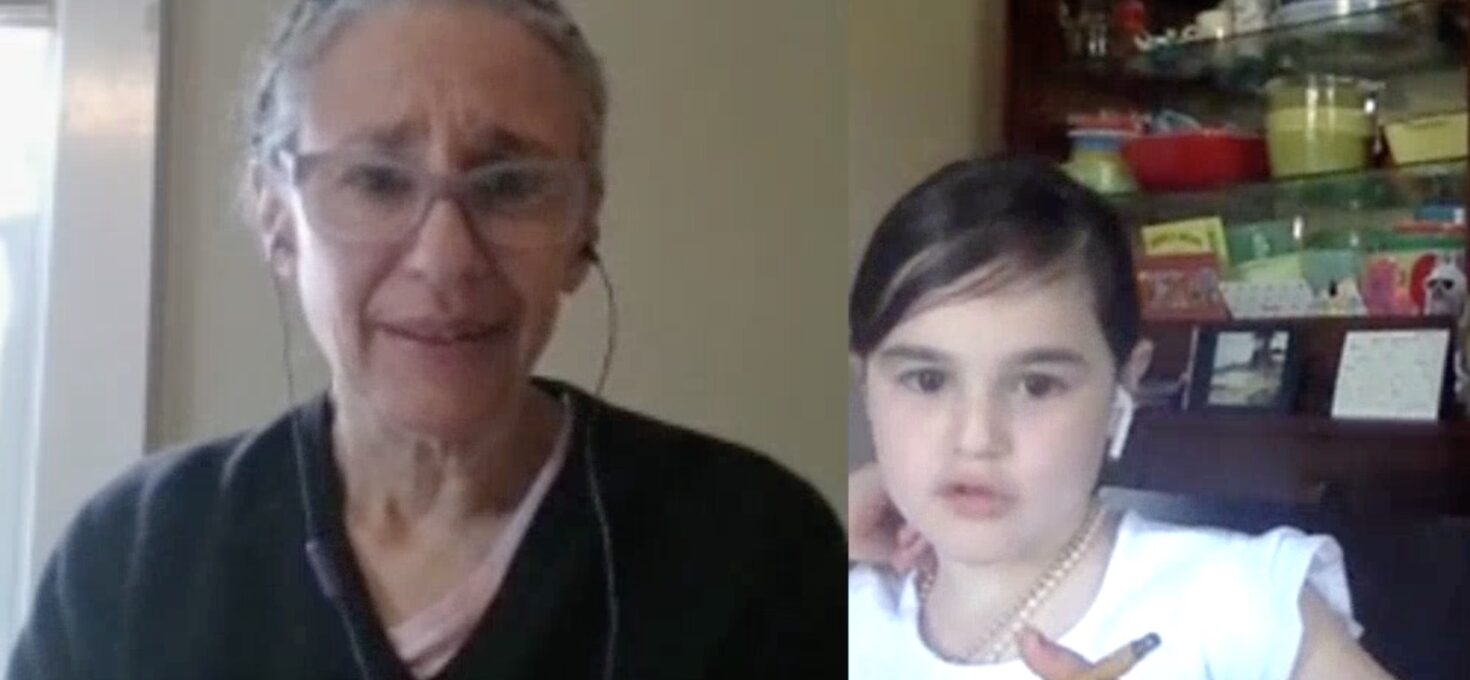[EDITOR’S NOTE: We have a special guest writer on Every Food Fits! My daughter, Dagny, age 7. During our COVID-19 physical distancing/homeschool adventure, Dagny had lots of questions about oysters, so I asked oyster farmer and Washington Post columnist Tamar Haspel if she would be good enough to let my kid bombard her with a list of questions Dagny wrote. The following column is the result of the 20-minute interview and hours of research and writing. It was dictated to me by Dagny, thus you’ll find it’s part prose and part poetry, and the punctuation is on point. While Dagny sneaked in some opinion, our fourth-generation journalist checked and rechecked quotes to make sure they were 100% accurate. Enjoy!]
By: Dagny Belle Viera!
Baby oysters are my personal favorite.
Tamar Haspel, an oyster farmer in Cape Cod, Massachusetts, doesn’t grow baby oysters. She gets them from a hatchery. A hatchery is where a baby oyster is born. People trick the oysters into thinking it’s good enough water and good enough things that are regular for oysters to have a baby. So they let out sperm and eggs, and once they meet, it starts developing a baby oyster called a spat.
A baby oyster is as small as a worm when it is born.
From hatcheries to farms, from farms to seas, from seas to rivers, from rivers to oceans, from oceans to waterfalls, from waterfalls to more oceans, from more oceans to Cape Cod. From Cape Cod all the way again with another baby oyster.
Barnstable Oyster, Haspel’s company, gets 200,000-400,000 baby oysters every year. That makes it a small farm. “It sounds like a big number, but that’s a small farm,” Haspel said.
As soon as a baby oyster is born, they fend for themselves. At Barnstable Oyster, the baby oysters “eat what’s in the water,” Haspel said. “So basically, we take them as babies…and it’s our job to protect them from predators and make sure that they stay in the water with lots of water flowing around them because that’s where they get their nutrients. We move them around a lot, but we don’t have to feed them.”
Oysters are called bivalves, according to the National Ocean Service, because they have gills and suck up the water and filter it, and that is how they eat. Haspel grows eastern oysters.
“Almost all seafood is good for you,” said Haspel. “Oysters are known for having zinc, actually, which is one of the minerals our bodies need.”
Oysters are hard-shelled little guys. You have to get a pointy knife to open their shells. It is called “shucking.” There is an oyster shucking video so you can see how to shuck an oyster. Haspel said oyster shucking is a very hard skill to master!
“Usually we don’t cook them,” said oyster farmer Haspel. “Usually we shuck them and eat them raw.”
Haspel’s oysters taste mild. “Our oysters are in harbor waters, which is less salty, and that gives them a milder taste.” A stronger taste is from oysters in ocean water.
When I said do you like to eat oysters, she said, “I do like to eat oysters, and it’s nice to know I can eat as many as I want. It’s one of the great things about being an oyster farmer, is that we get to eat as many as we want, and we get to share them with our friends.”
When I asked her what she likes best about being a farmer, Haspel said, “It gets me outside and it helps keeps me fit and strong. And it’s important to me to get exercise and to stay strong…It’s beautiful to be out there, I enjoy that also…It feels great to come home after having worked really hard and knowing that your body can do it and that you’re keeping yourself fit while you do it.”
When I asked her what she really doesn’t like about working outside on the farm, Haspel said, “Well sometimes in the winter it’s really, really cold, and if you get wet when it’s cold, it can be very uncomfortable. A cold, windy day is my least favorite thing on an oyster farm.”
I watched Haspel’s videos on YouTube, and I saw pigs getting sprayed with a hose. On the farm, they raise pigs and other kinds of animals to eat them. I know, it’s really harsh, but they might get new ones next year!
Haspel said that “one pig can feed us for an entire year.” No part of the body goes to waste. They make heart ham and pork stock with the bones.
Haspel is also a good writer. She really likes having written. She said it’s a job that suits her very well!
IN MY OPINION, HASPEL IS #1!


During my childhood in San Juan Puerto Rico I bought and ate oysters from a man that sold them to the public
Normally he carried two buckets full of oyster. He opened the shell with a small knife then he added a couples drops of lime to make them more tasty and delicious.
Reading this article I learned their life cycle. It was a good learning experience.
Such an informative and entertaining article! So cool that you interviewed Tamar Haspel!!
Great story! I had no idea what baby oysters were and where they can from. Thanks for sharing.
This was a fabulous interview. I did not know the difference between oysters raised in a harbor and those that grow in saltier water. Dagny and Tamar taught me a lot.